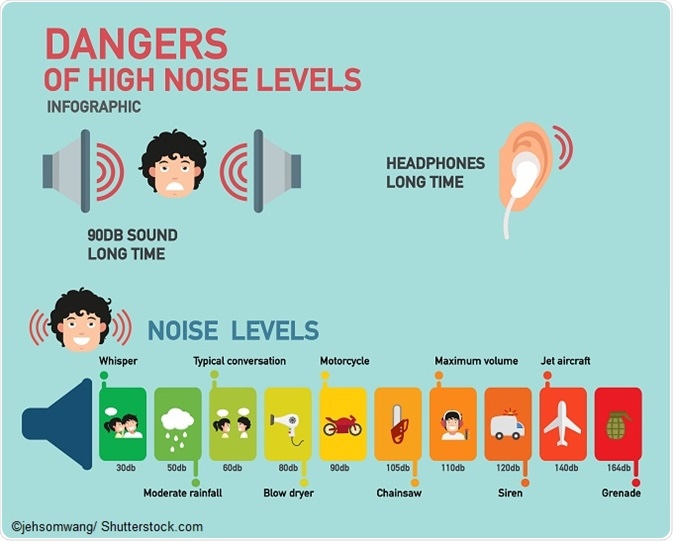Site Under Development, Content Population and SEO, Soft Launch 1st January 2020
All of us come across different sounds in our life—sounds from television, radio, household appliances, traffic, children’s’ laughter, rain, calls of animals/birds and many more. Sounds that are too loud, even if present for a short span of time, can affect the sensitive structures of the inner ear.

The damage can affect hearing and result in noise-induced hearing loss (NIHL). This type of hearing loss may be immediate or may take some time before it is noticed. The effects can be temporary or permanent, affecting both or either of the ears. However; NIHL can be treated and is most often a preventable form of hearing loss.
A decibel (dB) is a unit of measurement that indicates the loudness of sound; when the noise level is increased, the decibel level also increases. The level of noise and the duration of exposure to such a noise level have a direct impact on individuals’ hearing ability.
The human hearing threshold is between 0 dB and 140 dB. In our daily life, we are exposed to situations with variable decibel levels. While 0 dB is the quietest sound, 120 dB can be as loud as thunder. The recommended longevity for exposing to 85 dB is 8 hours and for 110 dB it is just 1 minute and 29 seconds. The amount of noise is doubled when there is a rise of 3 dB and so the recommended exposure time reduces to half.
When exposed to more than 85 dB, and a more prolonged exposure to higher noise levels can result in permanent hearing loss. Staying away from noises that are too loud and too long is a strategy to prevent induced hearing loss.
When exposed to loud noise over a long period the symptoms for induced hearing loss, which will gradually increase, are as follows.
It is recommended to be watchful of dangerous levels of noise in the environment and recognize which noises can injure the hearing ability. Alerting family, friends, and colleagues about the risk of noise and taking preventive steps is advisable.
The three keywords to protect hearing are Walk, Block, and Turn
Poor classroom acoustics will affect children as well as the teacher. In such a situation, teachers should raise their voice and talk louder, which again leaves them with voice problems. It is important to create an environment for good communication.
Some suggestions to reduce the noise level in the classroom include the following:
At home, some toys are considered a noise risk for children. Parents must scrutinize available toys at home, discard the noisiest toys, or remove their batteries to make them safe for their children to play with. Additionally, while buying new toys, parents should listen to the toy and if it sounds loud avoid buying it.
Firefighters and other first responders, military personnel, disk jockeys, construction workers, and mineworkers often work in a loud noise environment. Noise increases fatigue and irritability, upsets the stomach, increases the heart rate, reduces the attention span in jobs, and affects the work performance. Exposure to more than 85 dB of noise continuously may cause permanent hearing damage and affect the work performance.
Some steps to prevent noise at these work environments are as below: